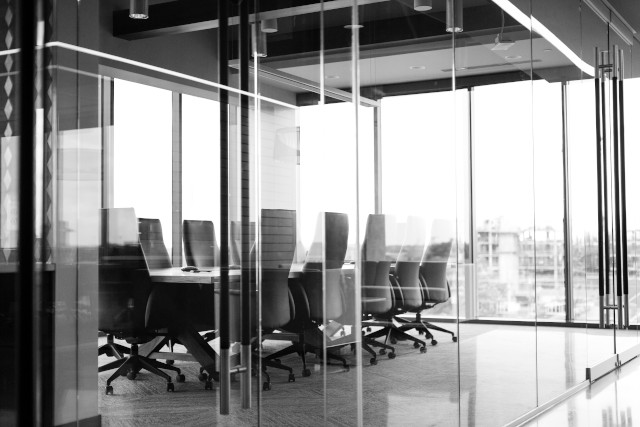News You Can Use: 6/10/2020

Photo by Markus Spiske on Unsplash
- Poorly Designed Curfews Are Wreaking Havoc on Cities
The problem stems in part from the litany of exceptions and caveats embedded within the curfew policy. Essential workers are allowed out past curfew as long as they are going from work to home. But they are allowed to stop at a deli for a meal. But then they have to go right home. Unless they need medical supplies, then they can get those too. Food delivery workers can also be out, as can media, but only if they’re working. If you’re stopped, there are “no specific requirements for ID.” It is, in short, up to whether the police officers believe you or not.
Plus, the guidance that “transportation infrastructure such as bus, rail, and yellow and green taxis will be operating normally” proved not to be the case. At Columbus Circle, Gothamist reporter Jake Offenhartz tweeted a photo of police in front of the subway entrance 13 minutes prior to curfew. “Uber and Lyft have been ordered shut at 8. Citi Bike and Revel are already deactivated in the neighborhood,” Offenhartz added, referring to the city’s bike and moped share systems. “When curfew hits in 10 minutes, how the hell are people supposed to get home???”
https://www.vice.com/en_us/article/qj4bv7/poorly-designed-curfews-are-wreaking-havoc-on-cities
DoorDash says it is ‘prepared to provide support’ for Caviar workers arrested in NYC during curfewOn-demand delivery workers are now caught between the protests and law enforcement, as on-demand apps like Caviar, DoorDash, and Uber Eats informed them that they could continue taking orders as essential workers in certain cities despite the curfew. In some locations, like San Francisco and Washington, DC, Uber and other apps ceased operations during curfew hours. But in New York City, the apps assured their contractors, many of whom rely on the apps for income during the pandemic and yet receive no other form of financial assistance, they could continue working.
“Our teams on the ground are working closely with cities on how to best support them based on their needs and the local situation,” an Uber spokesperson told BuzzFeed News earlier this week regarding its inconsistent approach to city curfews. “Some cities have requested that we suspend operations during curfew hours while others want to ensure Uber is available for essential services.”
- What should schools teach? Now is the moment to ask
- Google outlines plan to get some employees back to the office
Google will begin opening some of its office buildings in various cities starting on July 6, allowing a small amount of its employees who need a physical workspace “the opportunity to return on a limited, rotating basis.” The idea is to rotate employees in for a day every few weeks to keep facilities at only around 10% occupancy.
If all goes well in its initial efforts, Google will scale that 10% up to 30% around September “which would mean most people who want to come in could do so on a limited basis, while still prioritizing those who need to come in,” according to Pichai.
https://techcrunch.com/2020/05/26/google-campuses-reopening-covid-19/
Google’s work from home strategy includes a $1,000 allowanceAs a result the company is providing a $1,000 allowance to staff to help them buy computers, office furniture and other equipment needed for remote work. While that might not cover everything, it should ease the burden for workers who don’t have everything they need.
https://www.engadget.com/google-work-from-home-allowance-221701178.html
- Why Does Zoom Exhaust You? Science Has an Answer
Zoom and other video-conference services present many communication pitfalls—an inability to read body language, faces that move into different spots on the screen, a chat feature to accommodate side comments and transmission delays that hinder turn-taking. “You are always making a judgment about how much to speak and when it’s appropriate,” says Steve Harrison, associate professor at Virginia Tech and director of its Human-Centered Design Program.
With so little non-verbal and real-time feedback, it’s difficult to tell if people on the other end of the video line are with you. “Ask a question and there’s silence. You feel like you’re talking to empty air,” says Keeley Sorokti, director of knowledge sharing at the Chicago-based nonprofit Ounce of Prevention Fund.
Another source of stress, researchers have found, is that a mirror or video camera trained on study subjects causes them to see themselves the way they think others do. “When you look in a mirror, what you tend to see is your objective self,” says Amy Gonzales, assistant professor at UC Santa Barbara who studies media and identity. “I guess my nose is kind of big. Maybe I do need some wrinkle cream.” Zoom says it offers a control to block the mirror image.
https://www.wsj.com/articles/why-does-zoom-exhaust-you-science-has-an-answer-11590600269
News You Can Use: 5/27/2020

Photo by Drew Beamer on Unsplash
- The office is dead, according to most startup founders
The implications of these findings offer a glimpse into a post-COVID-19 work world. Sixty-six percent of CEOs are considering letting go of (or downsizing) their offices, according to the survey, because an average of 70% of employees who previously reported for duty at a company’s workspace would be allowed to work remotely once stay-at-home orders are lifted.
The majority predicted that mandatory shutdowns will be over by the end of Q3, and 67% said that they would make a sanitized/sterilized workspace a priority to keep their people safe. The majority (61%) said they would allow employees to continue working from home until they felt safe enough to travel and could manage childcare. These CEOs said their companies would not incur additional expenses to help their workers with childcare or commuting.
https://www.fastcompany.com/90507601/the-office-is-dead-according-to-most-startup-founders
Mark Zuckerberg’s new work-from-home zeal is very, very convenientGetting out in front on this work-from-home revolution might just be the message for today, when many of us have come to believe that COVID-19 will change work forever and radically deemphasize the importance of brick-and-mortar offices. (Though not everybody buys it.) It’s a feel-good message that comes just after Facebook picked off Giphy in the midst of a pandemic and during the height of anti-trust angst in Washington. Earlier this month, The Washington Post revealed that Facebook is behind the launch of a new lobbying group called American Edge, which will try to calm anti-tech and anti-trust fever in the capital.
If Zuckerberg follows through on his comments, there are some positives here. Zuckerberg stated that Facebook will immediately start focusing on hiring people who live away from the crowded and overpriced housing markets of the coasts. If Facebook did transition to 50% remote work, it could expand the tech talent pool geographically and make it easier for tech companies small and large to find good people. “It doesn’t seem that good to constrain hiring to people who live around offices,” Zuckerberg eloquently said. It might also extend the economic spillover zones that benefit indirectly from tech industry money to new places farther from the coasts.
Even here, there’s a dark side. Facebook says it will adjust salaries to fit the location of the employee, so an engineer working in Silicon Valley will make more money than an engineer doing the same work in Nevada. But, to be fair, such an adjustment might be appropriate so long as the quality of life the two salaries can buy in different markets is equal.
- Understanding the Economic Shock of the Covid-19 Crisis
- Microsoft CEO Satya Nadella warns about the consequences of embracing remote work permanently
“What I miss is when you walk into a physical meeting, you are talking to the person that is next to you, you’re able to connect with them for the two minutes before and after,” he said.
Nadella warned about the consequences of embracing telecommuting permanently:
“What does burnout look like? What does mental health look like? What does that connectivity and the community building look like? One of the things I feel is, hey, maybe we are burning some of the social capital we built up in this phase where we are all working remote. What’s the measure for that?”
Nadella’s concern doesn’t appear to be shared widely throughout the technology industry. Twitter CEO Jack Dorsey notified staff this week that they should feel free to work from home indefinitely if they choose. Salesforce and Zillow will give employees the option to telecommute for the rest of the year.
- The hunt for a work-from-home webcam: A story of broken supply chains, ‘sold-out’ messages and refreshing online carts
Webcams are sold out or on weeks-long back order nearly everywhere across the Internet, and people are reporting having trouble finding them in the limited number of retail stores that are open as well. E-commerce tracking company CommerceIQ found 78 percent of views on webcam product pages on big online retail sites showed the items were out of stock during the week ended May 9.
People’s shopping habits have shifted away from just buying bulk amounts of food during the pandemic to facing extended work-from-home periods, CommerceIQ CEO Guru Hariharan said.
“Now, I think people are slowly starting to realize this is a new normal,” he said. “They realize they need to get prepared for a new operating normal.”
https://www.washingtonpost.com/technology/2020/05/21/webcam-backorder-coronavirus-pandemic/
News You Can Use: 5/13/2020

- The rise of the human-centric CEO
At a micro level, the misplaced application of peacetime CEO/wartime CEO can fundamentally change a company for the worse. A wartime CEO, as Horowitz notes, is “completely intolerant, rarely speaks in a normal tone, sometimes uses profanity purposefully, heightens contradictions, and neither indulges consensus building nor tolerates disagreements.” In the strictest application, we are seeing this align with a common false trope that has plagued the tech industry: “To change the world like Steve Jobs, I need to emulate all aspects of Steve Jobs’ personality.” A classic logical fallacy many founders/CEOs have learned the hard way — if you emulate all aspects of Steve Jobs’ personality, it doesn’t mean you will change the world like he did.
At a macro level, peacetime CEO/wartime CEO conjures outdated themes that are at best inaccurate, and at worst, counterproductive. War implies “destruction, ruthlessness, blood, death;” there is an innate sense of machismo and bravado in this language reinforcing a homogeneous tech community. This type of vernacular and attitude increases barriers to a more inclusive community excluding women and underrepresented minority participation.
https://techcrunch.com/2020/05/05/the-rise-of-the-human-centric-ceo/
- CIOs Set Aside Rivalry for Collegiality to Tackle Coronavirus IT Problems
Enterprise tech leaders are finding a lot of value in real-time knowledge-sharing as they seek solutions to IT problems brought on by the health crisis and its fallout in the economy, said Sunny Gupta, a board member of the Technology Business Management Council, a nonprofit trade group that seeks to establish standards and best practices for enterprise IT managers.
Among other issues, Mr. Gupta said CIOs are being called upon to rapidly support a distributed workforce, replan IT spending and redo budget forecasts, cancel noncritical projects and refocus IT team efforts into capacity upgrades, public cloud and operational resilience—often all at once.
As a result, the IT industry is seeing an “unprecedented level of peer-to-peer support,” said Mr. Gupta, who is also chief executive of software maker Apptio.
- Some employers use software to monitor employees working from home
- How My Boss Monitors Me While I Work From Home
With millions of us working from home in the coronavirus pandemic, companies are hunting for ways to ensure that we are doing what we are supposed to. Demand has surged for software that can monitor employees, with programs tracking the words we type, snapping pictures with our computer cameras and giving our managers rankings of who is spending too much time on Facebook and not enough on Excel.
The technology raises thorny privacy questions about where employers draw the line between maintaining productivity from a homebound work force and creepy surveillance. To try to answer them, I turned the spylike software on myself.
Last month, I downloaded employee-monitoring software made by Hubstaff, an Indianapolis company. Every few minutes, it snapped a screenshot of the websites I browsed, the documents I was writing and the social media sites I visited. From my phone, it mapped where I went, including a two-hour bike ride that I took around Battersea Park with my kids in the middle of one workday. (Whoops.)
https://www.nytimes.com/2020/05/06/technology/employee-monitoring-work-from-home-virus.html
News You Can Use: 4/1/2020

Photo by 🇨🇭 Claudio Schwarz | @purzlbaum on Unsplash
- Two Best Friends and the Global Treasure Hunt for Coronavirus Supplies
The Department of Health and Human Services estimated earlier this year that the U.S. could need more than 3.5 billion face masks if a pandemic took hold domestically, which it did with a vengeance this month.
The problem is compounded by the decentralized nature of the U.S. health-care system. Whereas hard-hit nations like Italy and China can buy equipment for their whole country at once, U.S. hospitals less frequently band together.
Prices for the coveted N95 mask, preferred for its ability to block out viral particles, have shot up this month from around $1 apiece to $5 or more, depending on the supplier, buyers said. A single hospital may burn through tens of thousands a day.
- 3M Making More Masks
- How Decades of Offshoring Led to a Mask Shortage in a Pandemic
The emergence of Covid-19 in China made the risks of concentrating production of US health workers’ protective gear in one country painfully clear. The initial outbreak in Hubei province caused a surge in demand for masks inside China, and cut supplies when authorities shuttered factories to halt the virus’ spread. Production of masks has now resumed and companies are expanding capacity, but not much of it has shown up outside China.
One ripple effect has been ringing phones at Monadnock Nonwovens. The company has been swamped with inquiries including from manufacturers in the US, but mostly from elsewhere, such as Asia and South America, who are trying to expand their mask output, and sometimes scrambling to replace materials previously sourced from China.
Hayward says he’s hired more workers and adapted some equipment to produce face mask material, rather than other products, around the clock. The material is made from fine strands of plastic on a machine about 40 feet long and 20 feet high that operates something like a paper mill, churning out nonwoven fabric with tight pores on giant rolls. So far, supplies of the raw plastic have held up.
https://www.wired.com/story/decades-offshoring-led-mask-shortage-pandemic/
- Instructional video for sewing the Olson mask
- If you’re working from home, chances are you’ll save money
There may be a clear silver lining to remote work: It often saves workers money by cutting expenses such as commuting costs, say remote workers and experts in the field. But you’ll likely face some tradeoffs, such as paying for more bandwidth to handle videoconferencing and office supplies – the type of “expenses that are normally provided within a traditional office setting,” says Amelia Green-Vamos, a Glassdoor career trends expert. Some employers say they plan to reimburse workers for those extra costs.
Remote workers typically save about $4,000 a year by working from home, according to a study from FlexJobs, an online job service that specializes in flexible jobs. That comes from saving on commuting costs as well as paring spending on coffee, lunches and a professional wardrobe.
https://www.usatoday.com/story/money/2020/03/22/working-home-likely-save-you-money/5024967002/

